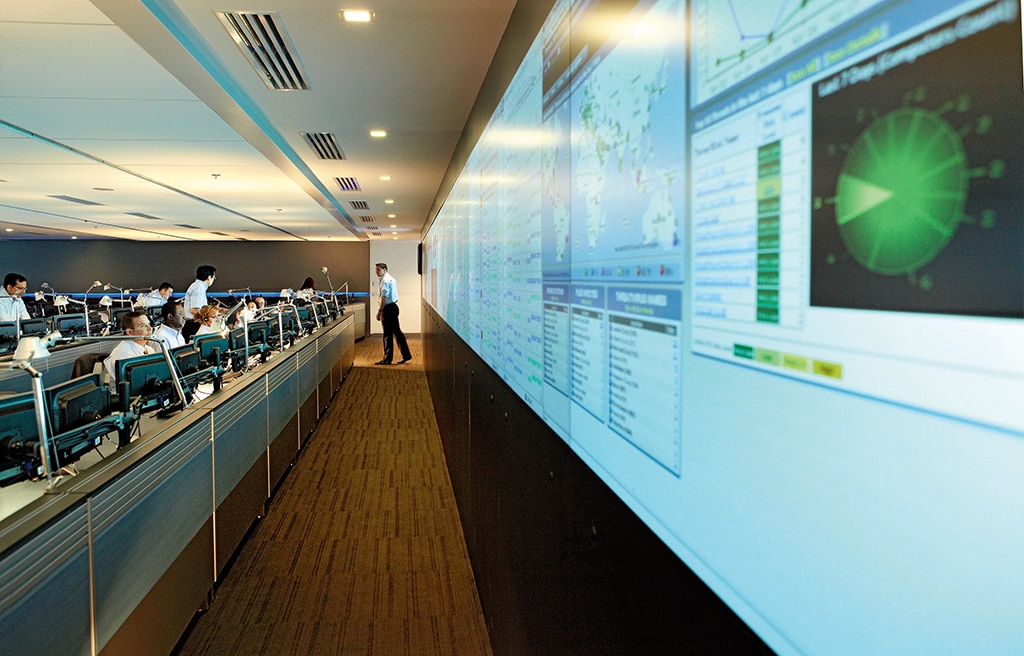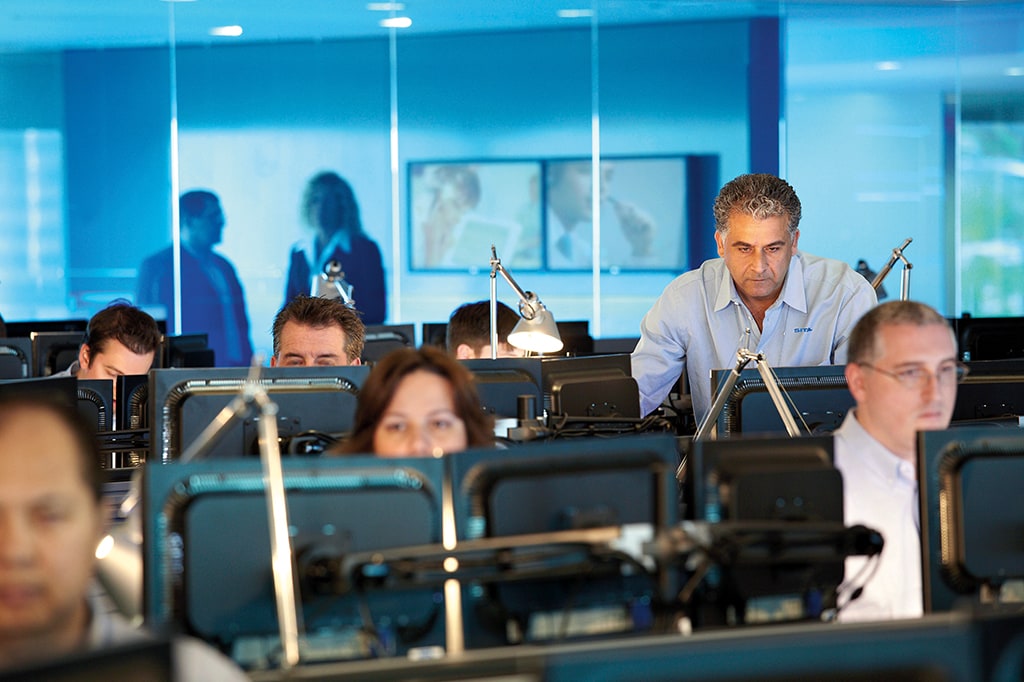Behind the Scenes of SITA’s Airport Operations
Share

APEX Insight: At every step of the passenger experience, from check-in to baggage tracking, the SITA Command Center works around the clock, in Montreal and Singapore, to ensure there are no hitches throughout the journey.
At 6:50 a.m., Gustavo Romero reaches for a cup of tea to begin his 12-hour workday. A conference call is made to Singapore and he is briefed on any serious airport disruptions that may have occurred overnight – flight delays, mishandled baggage, overcrowded servers. These incidents have happened in airports in Australia, Asia, the Middle East and Europe while Romero was asleep in Montreal. But for Romero, head of the SITA Command Center in Montreal, they transcend time zones and origins if they have not been resolved before “The Handover” – when the world’s airport operations are passed on to him.
By 7 a.m., Romero has exchanged e-mails with his counterpart, Mathew White, who works out of the SITA Command Center’s second location, in Singapore, and his team is up to speed on the remaining tasks at hand. “We call them ‘the brothers,'” says Chantal Dubé, director of SITA Global Services Baggage and Cloud Operations, even though “they look very different.” Both are head of the SITA Command Center, both helm SITA’s airport operations for 12 hours of the day, and in doing so, the two are practically conjoined. “The scary part is, some days, not that often, the first person I speak to in the morning is Gustavo and the last person I speak [to] before I go to bed is Gustavo. Those are the days where we have an incident that needs a really high level of focus and mobilization of expert resources,” White says.
By 7:30 a.m. each day, the command center’s operations are officially passed from Singapore to Montreal like an Olympic Torch – only without the fanfare. Singapore shuts down to sleep and the operations carry on in Montreal, where computers are humming, screens are alight and somewhere, a coffee pot is on. “Every day, every hour, we work as one,” Romero says. “We have to, because in truth, we are in the same boat. Together, Mathew and I either succeed or fail. This culture is embedded in the command centers at SITA.”

It Takes Two
Prior to having two command centers, SITA had separate support channels for various services. In 2010, they were consolidated into the SITA Command Center in Montreal, which operated on a 24-hour cycle, 365 days a year. But overnight shifts proved difficult to keep up, and a year later, a second office was established in Singapore.
Having mirroring command centers on opposite sides of the world allows the different time zones to be covered at reasonable hours by either office, meaning Romero isn’t waking up in a hot sweat over minor glitches in the system – and neither is his “brother.” “The good thing is, I can sleep, he can sleep,” says Romero. “Before that, when there was an escalation, we were being called in the middle of the night.”
The mirroring offices also play a supportive role in the event of a disaster. “What if the building has an issue? There’s a crisis going on?” Dubé asks rhetorically. “This is why it was also taken into consideration to have [a second office] in a different – not even city – but a different country altogether.”
“Every day, every hour, we work as one.” – Gustavo Romero, SITA Command Center
If an ice storm wipes out power in Quebec, as it did in 1998, Singapore can take over full-time for the duration of the emergency. “It ensures that there’s no drop in the operations,” Dubé says. “There’s a constant level of attention on the issue and it carries on despite the fact that there is another country on the other side of the world picking up what we’re doing.”
In Case of an Incident
At any given time, about 70 staff are monitoring data and applications from 30,000 common-use terminals and check-in kiosks for airlines, airports and airport authorities across 200 countries. A row of seven-foot-tall screens that runs almost the width of the room acts as the motherboard, displaying real-time data from airlines, airports, servers, kiosks and baggage systems.
When a check-in kiosk at an airport is low on paper, for example, it appears at the command center as a low-level priority. Each “event” is assigned a priority and trickles down to the responsible team through a ticketing system. Since filling up paper isn’t a task that can be performed remotely, an alert is sent to an on-site technician who will likely receive the message on his or her mobile device.
“Customers don’t see anything, passengers go on their journey, board their flights.” – Chantal Dubé, SITA Command Center
As an event evolves, so does its urgency. The check-in kiosk that was low on paper becomes a higher priority when it’s out of paper. But when the issue is about paper that’s counted in dollars and not in sheets, it becomes a more urgent matter. “We manage a lot of our customers’ mission-critical systems,” says Dubé, “meaning, if they go down, then there’s an operational impact with … aircraft potentially [stuck] on the ground and delays of flights, which aggravates passengers [and] costs the airlines a lot of money.”
Being proactive is key to delivering seamless airport operations. By the time a client reports an issue to one of SITA’s service desks in Costa Rica, Cairo, Jordan or India, it’s already registered as an incident in the Command Center’s system. “Most likely we are already aware of the situation,” says Romero, “and we are in a position to provide them with an update on how the resolution is progressing … Mobilizing resources to address those incidents in a timely manner is fundamental in our business, and that’s what we do.”
 As If Nothing Ever Happened
As If Nothing Ever Happened
For the average traveler, checking in for a flight is a simple procedure: Arrive at the counter or kiosk; have your passport ready and, if offered, indicate your seat preference. “Most people have gone to an airport to pick up somebody or to take a flight, but very little is known about how it works in the background,” Dubé says.
Working behind the scenes, often invisibly, is also what she calls the “cool factor” of her job. “Being able to take care of everything in the background without people knowing about it and making it run smoothly … Customers don’t see anything, passengers go on their journey, board their flights … There’s a lot going on in the background of running an airport and an airline, and we’re at the heart of it,” says Dubé.
“Smooth Operator” was originally published in the January/February 2016 issue of APEX Experience magazine.


